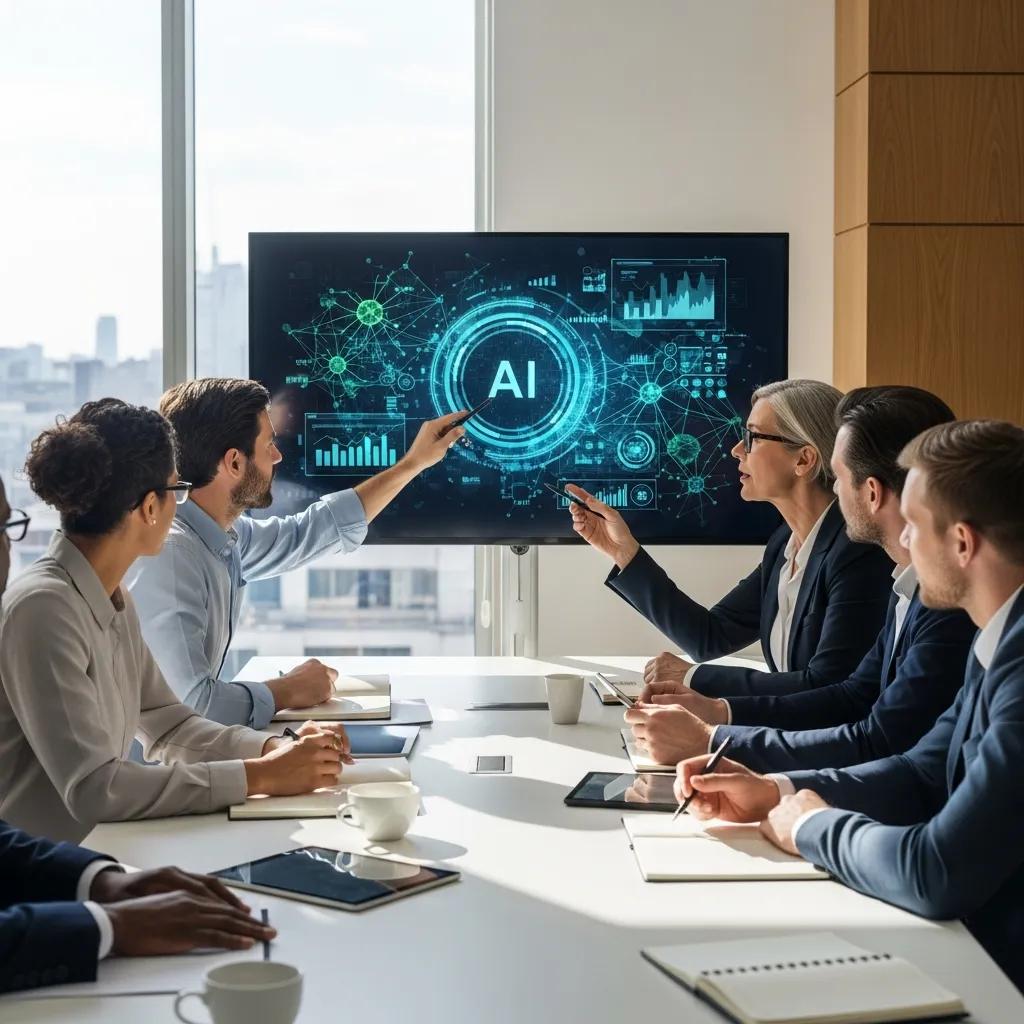Are you curious about the difference between a Chief AI Officer and Chief Data Officer? These two leadership roles are critical in today’s data-driven world, but their responsibilities can often seem blurred. This article clarifies the distinctions between these two positions, exploring their distinct functions, required skills, and how they contribute to an organization’s success in the realms of data management, artificial intelligence, and data science.
As artificial intelligence rapidly transforms businesses, understanding the roles driving this change is crucial. We’ll explore each role in detail, comparing their focuses and highlighting how they collaborate within an organization’s structure.
Understanding the Chief Data Officer (CDO)
The Chief Data Officer (CDO) is like the architect of an organization’s data infrastructure. They design and manage how data is collected, stored, managed, and governed.
This includes overseeing systems like data warehouses and data lakes. They also implement data governance programs to ensure high data quality. The CDO ensures compliance with data privacy policies and utilizes effective data tools to facilitate organizational efficiency.
Key Responsibilities of a CDO
- Developing and implementing data strategies.
- Overseeing data governance and compliance.
- Managing data quality and accessibility.
- Enabling data-driven decision-making across the organization.
Understanding the Chief AI Officer (CAIO)
The Chief AI Officer (CAIO) is like an inventor, using data to create new possibilities. They are responsible for developing and implementing AI systems to leverage insights from data analytics techniques.
The CAIO transforms data into actionable insights that meet business needs and improve operations. They also spearhead AI initiatives that drive innovation by exploring new AI applications and implementing generative AI solutions for customer service.
CAIO responsibilities extend to machine learning projects and using advanced analytics tools to gain performance indicators. They often collaborate with data scientists to achieve strategic goals and foster a responsible AI ecosystem.
Key Responsibilities of a CAIO
- Developing and implementing AI strategies aligned with business goals.
- Identifying and leading AI projects to improve performance.
- Overseeing AI development, model training, and deployment.
- Building partnerships within the organization to find new areas of leverage, impact business in innovative ways, and encourage enterprise-wide AI adoption.
Chief AI Officer vs. Chief Data Officer: A Direct Comparison
While both roles involve working with data, their focus and approach differ. The CDO ensures data is available, usable, and secure. The CAIO leverages this data to create business value through AI applications.
| Feature | Chief Data Officer (CDO) | Chief AI Officer (CAIO) |
|---|---|---|
| Primary Focus | Data Management, Governance, and Availability | AI Strategy, Development, and Implementation |
| Key Skills | Data Architecture, Data Governance, Data Quality Management | AI/ML Expertise, Business Acumen, Strategic Thinking |
| Objectives | Ensure data quality, accessibility, and security | Drive innovation and deliver business value through AI |
These roles often collaborate closely. The increasing adoption of AI further underscores the critical role of robust data governance, as highlighted in the Voice of the Chief Data Officer report. This emphasizes the importance of strong data governance programs implemented by the CDO.
Collaboration Between CDO and CAIO
The CDO and CAIO work together, similar to two sides of the same coin. The CDO provides the raw material (data) that enables the CAIO to apply AI for innovation and business growth. Both play a critical role in shaping an organization’s approach to big data.
This synergy maximizes the value derived from data. As discussed in Harvard Business Review, proper support and internal organization are essential for both the CDO and the Chief Artificial Intelligence Officer to thrive and deliver business impact. Clear reporting lines are vital. Having a chief strategy officer or a similar executive can enhance communication and resource allocation, especially in environments with limited resources.
Gartner suggests that chief data and analytics officers must adapt in the age of AI to maintain relevance and demonstrate value to board members. CDOs must actively work to showcase the impact of their data governance initiatives on AI projects, and emphasize the financial impact of effective data management, particularly within sectors like financial services. Randy Bean and other data leaders encourage organizations to invest in their intelligence officers for artificial intelligence officer development.
The Evolving Landscape of Data and AI Leadership
The rapid evolution of technology and AI adoption has led to a complex landscape of data and AI leadership roles. New titles like Chief Data and Analytics Officer (CDAO) are emerging, sometimes replacing more traditional roles. A 2023 CIO study revealed the increasing demand for the Chief AI Officer position.
This shift suggests businesses recognize the strategic importance of artificial intelligence officer and their ability to drive growth and deliver business impact. A West Monroe report titled “What Will the C-Suite Look Like in 5 Years?” explores the growing importance of these leadership roles.
As artificial intelligence officers play an increasingly pivotal role in impacting business, their positions should align strategically with data governance and management teams. This emphasizes that CDO roles must remain vital for maintaining data accessibility for optimal performance indicators across different artificial intelligence initiatives and ensuring responsible use of customer service data. These insights have been supported by Allision Sagraves and others for CDOs and other related C-suite positions.
FAQs about Chief AI Officer vs. Chief Data Officer
What is the difference between Chief Technology Officer and Chief Data Officer?
A Chief Technology Officer (CTO) focuses on the overall technology vision and strategy of an organization. A CDO specializes in managing and leveraging data as a strategic asset.
What is the difference between CAO and CDO?
CAO typically stands for Chief Analytics Officer, distinct from the Chief AI Officer (CAIO). A CAO uses analytics to glean business insights from data. A CDO focuses on data governance across the organization.
What is another name for a Chief Data Officer?
Sometimes, the CDO is referred to as the Chief Data and Analytics Officer (CDAO), especially when overseeing both data governance and analytics functions.
What is the difference between CDO and CDAIO?
A CDO handles data management, while a CDAIO (Chief Data & AI Officer) has a broader role encompassing AI-driven applications of the data.
Summarizing Key Takeaways
The core difference between the Chief AI Officer and Chief Data Officer lies in their primary purpose: the CDO manages and governs data, while the CAIO leverages this data to drive innovation and AI initiatives. The CDO lays the foundation for the CAIO’s success by ensuring data quality and accessibility.
While distinct, the collaboration between these roles is crucial for realizing the full potential of AI while maintaining responsible data practices. An effective organizational structure that supports both roles is key to maximizing the value of data and AI.






